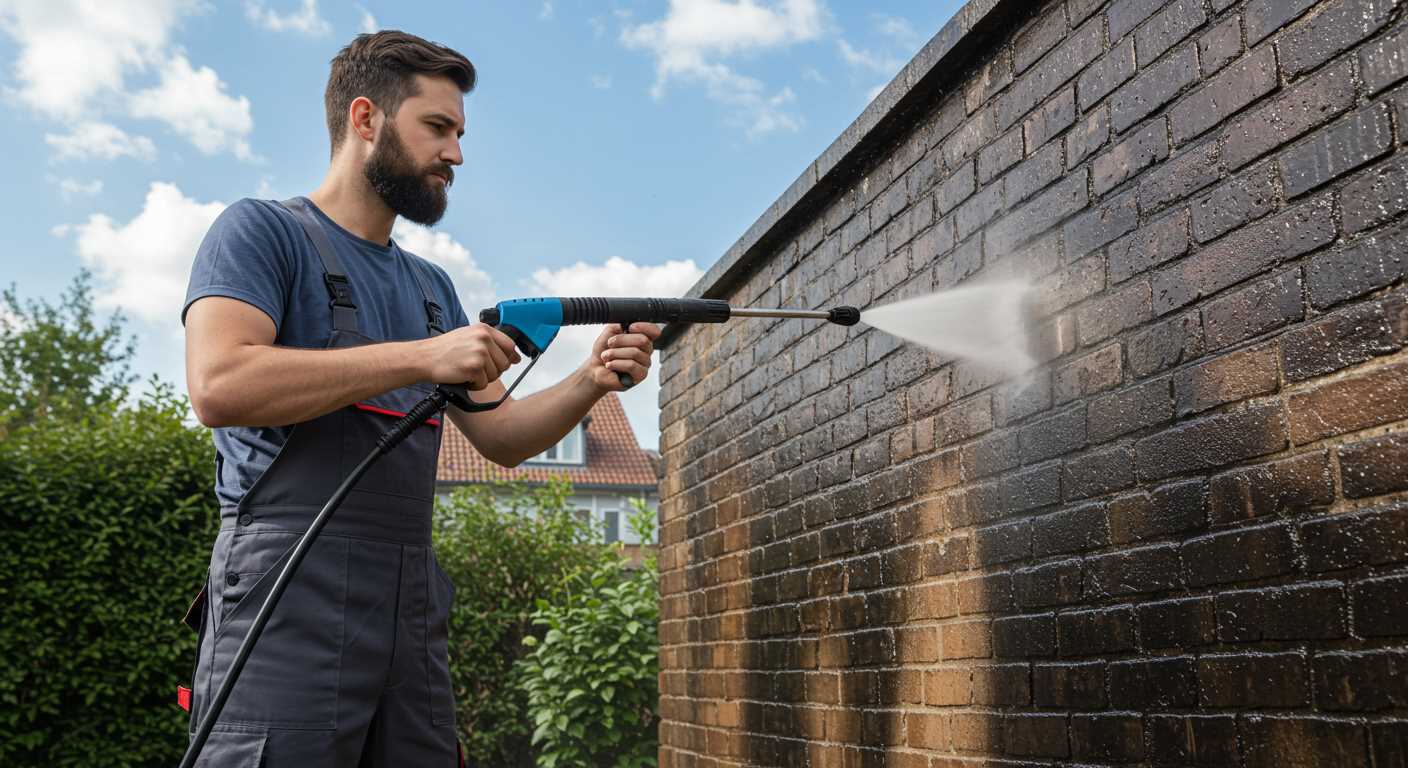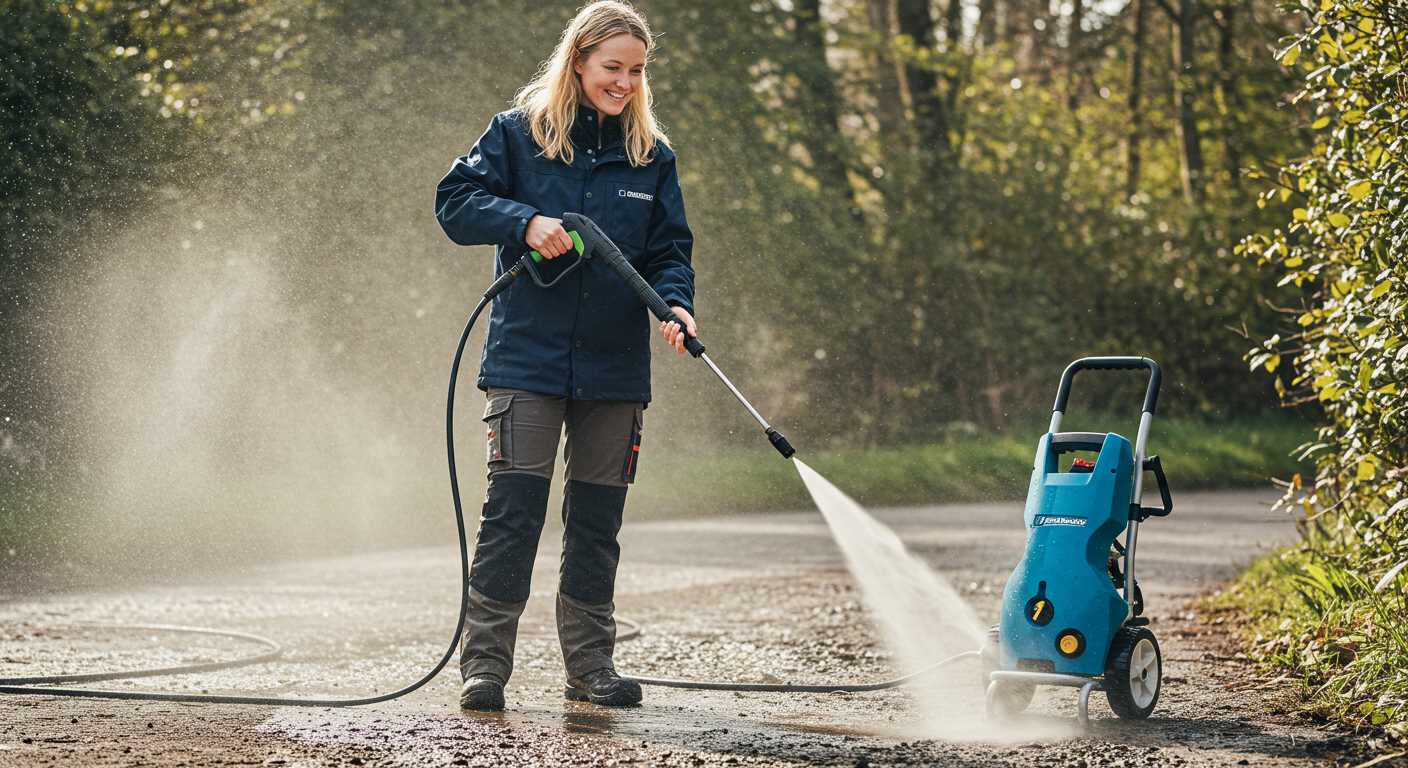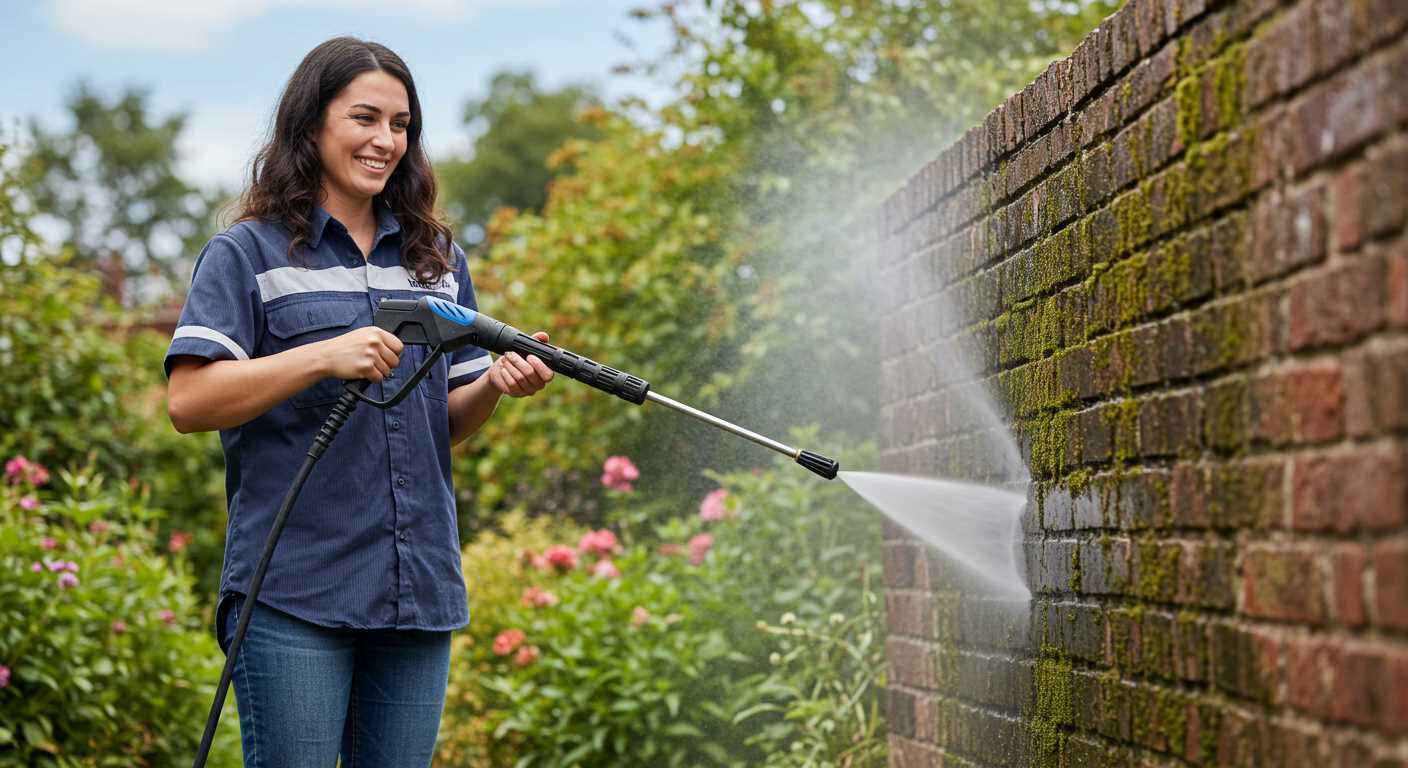

Check the water supply. A common reason for reduced output is inadequate water flow. Ensure your hose is connected properly and free from kinks. Verify that the tap is fully open and the water is flowing without obstructions.
Inspect the filters. Clogged or dirty filters can hinder performance. Clean or replace them regularly to maintain optimal function. Pay close attention to the inlet filter and any mesh screens that may be present.
Examine the nozzle. A blocked or incorrect nozzle can greatly affect the efficiency of the equipment. Make sure the nozzle is suitable for your tasks and free from debris. Swapping nozzles may also enhance performance, depending on the cleaning job.
Evaluate the pump. If the pump is malfunctioning, it can fail to generate the desired force. Listen for unusual noises that could indicate wear or damage. Check for leaks and consider consulting a technician if you suspect internal issues.
Lastly, inspect the pressure control settings. Adjustments may be necessary depending on the task at hand. Review the user manual or consult specific guidelines provided for your model to ensure you are utilising the right settings.
Checking the Water Supply and Hose Connections
.jpg)
Ensure the water source is flowing adequately. Inspect the tap to confirm it’s fully open and delivering a strong stream. If water pressure is low, this could lead to insufficient flow.
Next, examine the hose connections for any signs of leakage or damage. A compromised hose can prevent an optimal flow rate. Replace any worn-out sections promptly. Additionally, check that the hose is properly connected to both the water source and the unit. Tighten any loose connections to eliminate air leaks, which could disrupt performance.
| Issue | Solution |
|---|---|
| Low water flow from the tap | Check the tap or consider a different supply source. |
| Leaking hose | Inspect and replace damaged sections of the hose. |
| Loose connections | Tighten all fittings at the hose and water inlet. |
| Blocked inlet filter | Clean or replace the inlet filter to ensure free flow. |
Regularly inspect these components to maintain performance. A well-maintained water supply and hose will contribute to more effective operation.
Inspecting the Spray Gun and Nozzles for Blockages
Start by removing the spray gun from the hose. Check the nozzle for any debris or obstructions that could impede water flow. A simple visual inspection can reveal dirt or mineral buildup. If necessary, use a small brush or a needle to clear out stubborn particles.
Next, examine the spray pattern. If the water spray appears uneven or weak, this often indicates a clogged nozzle. Test different nozzles if available; switching them can help identify if the blockage is specific to one nozzle type. If the nozzle is removable, soak it in a mixture of vinegar and water to dissolve any mineral deposits.
Cleaning the Spray Gun
While inspecting the spray gun, check the inlet filter as well. A blocked filter can restrict water intake and lead to reduced flow. Clean it thoroughly, ensuring no residue remains that could disrupt function. After reassembling everything, perform a quick test to observe any changes in performance. If issues persist, deeper internal cleaning or replacement may be necessary.
Regular Maintenance Tips

Routine maintenance is key for optimal performance. I recommend inspecting the nozzles and spray gun after every few uses, especially if using hard water. A quick clean can prevent larger issues down the line. Store the equipment in a dry place and avoid keeping it under direct sunlight to maintain its longevity.
Examining the pump for signs of wear or damage

Inspect the pump thoroughly for any visible indicators of wear or damage. Look for cracks, leaks, or corrosion that could impair functionality. Regular checks can prevent further issues.
- Examine seals and gaskets: Look for any signs of deterioration or leaks around the seals. If they’re brittle or misshapen, they must be replaced.
- Check the connecting bolts: Ensure they are tight. Any loosening can lead to reduced efficiency and performance loss.
- Inspect the crankshaft: If you notice any roughness or unusual noise while operating, this may indicate wear that necessitates further assessment.
- Look at the piston: A damaged piston can directly affect the output. Watch for scoring or wear, as it may require replacement.
Evaluate the overall condition of the pump regularly. If you notice any irregularities in operation, refer to the manufacturer’s specifications for maintenance or service recommendations.
Verifying the Pressure Settings and Adjustments
First, confirm that the settings on the machine align with the intended cleaning task. It’s common for devices to have multiple pressure levels tailored for different surfaces. For instances demanding lower force–like prepping a vehicle–you’ll want a gentler setting, while tougher grime may necessitate a higher one.
Next, ensure the adjustment knob or dial is functioning correctly. Sometimes, these can be stuck or misaligned. Gently rotate the knob back and forth to see if it responds. If any resistance or unusual sounds occur, further investigation into the mechanism might be required.
Check the owner’s manual for specific guidance on the marked settings. Familiarise yourself with the recommended pressure range for your model. Overloading the system beyond its limits may lead to malfunctions.
Lastly, after making adjustments, always test the output without any attachments. This won’t just guarantee that the adjustments are effective but also help identify if there are any lingering issues affecting the machine’s performance.
Assessing the Incoming Power Supply and Cord Integrity
Begin by examining the power source location. Ensure the outlet is functional, and test it with a different device, such as a lamp or smartphone charger. If the alternate device does not work, the circuit may be tripped or there may be issues with the power supply.
Power Cord Checks
Inspect the entire length of the power cord for signs of wear, fraying, or damage. Look for:
- Exposed wires: Any visible copper or frayed areas indicate a need for replacement.
- Burn marks or melted sections: These can signal overheating, potentially rendering the cord unsafe.
- kinks or sharp bends: Such deformities may affect performance and can lead to future issues.
Connection Evaluation
Verify connections at both the outlet and the equipment end. Ensure:
- The plug is securely fitted into the outlet with no looseness.
- The connection to the machine is tight, and there are no obstructions preventing a good fit.
For units equipped with a GFCI (Ground Fault Circuit Interrupter), test the GFCI button. If it trips, reset it and check if it remains functional during operation.
If all checks on the power supply and cord yield no issues, consider the internal components of the cleaner as a possible source of trouble. An electrical fault within the machinery may also hinder effective operation and should be addressed by a qualified technician.
Identifying issues with the unloader valve operation
Examine the unloader valve for proper functionality. If it’s stuck or malfunctioning, it could prevent the system from reaching the desired output force. Start by ensuring there are no visible obstructions or debris around the valve. Clean any dirt or particles that may be hindering its movement.
Next, test the valve’s operation by running the machine while observing the flow of water. If water is continuously flowing with minimal pressure, the unloader may be unable to redirect the flow back into the pump. This can often happen due to wear or internal damage.
Check the adjustment screw on the unloader valve. If it’s not set correctly, it can lead to inadequate output. Adjust it according to the manufacturer’s specifications, which you can typically find in the user manual.
Finally, if everything appears functional but issues persist, consider replacing the unloader valve. Over time, seals and internal components can deteriorate, leading to failure in maintaining the appropriate pressure. Ensure to choose a compatible replacement from a trusted supplier.
Reviewing the maintenance history and descaling needs
Regular maintenance records are crucial for troubleshooting issues. I recommend keeping detailed logs of all service performed, including dates and specific tasks completed. This allows you to identify patterns and recognise if certain procedures are being neglected.
Descaling is often overlooked but is vital for optimal performance. If you haven’t descaled your equipment in the past year, it’s time to do so. Use a descaling solution specifically formulated for your equipment type, following the manufacturer’s instructions. This process helps in removing mineral buildup, particularly if you have hard water in your area.
Pay special attention to the inlet filters. If these are clogged with debris or scale, they can restrict flow, directly affecting output. Clean or replace them as needed.
If you experience persistent issues, consider a comprehensive check of all components that may require professional servicing. Neglecting routine maintenance leads to larger and more costly problems down the line, impacting efficiency over time.
Lastly, after performing maintenance or descaling, run a test cycle to ensure everything is functioning correctly before undertaking significant cleaning tasks.
Determining Whether the Correct Detergent is Being Used
Always verify that the detergent type aligns with the specifications of your device. Using the wrong detergent can lead to poor performance and inadequate cleaning results. For example, if your equipment is designed for a specific formula, using a generic or incompatible product may hinder its functionality.
Identifying Suitable Detergents
Refer to the manufacturer’s guidelines to find approved cleaning solutions. Many models require biodegradable options to avoid damage to the machine and the environment. Utilizing a concentrated detergent specifically formulated for your equipment enhances cleaning efficacy.
Pay attention to the dilution ratios recommended on the label. Incorrect mixing can result in a formula that is either too weak to be effective or too strong, which can cause foaming issues and reduce overall reliability.
Inspecting Detergent Application System

Ensure that the detergent application mechanism is clean and unobstructed. A clogged injector can prevent proper mixing, affecting the concentration reaching the surface. Regular checks for blockages and maintenance of the applicator are necessary to guarantee optimal performance.
When in doubt, I recommend contacting the manufacturer or consulting a knowledgeable dealer for advice on compatible detergents, ensuring your equipment achieves its full potential.







